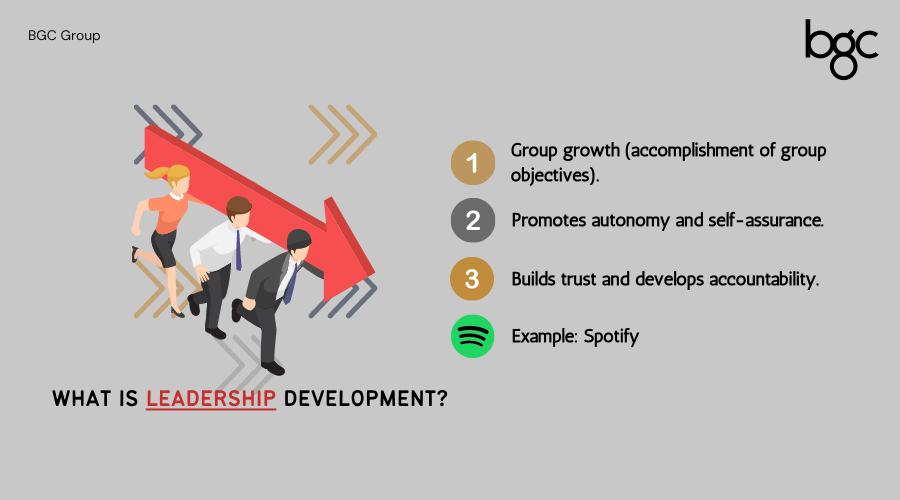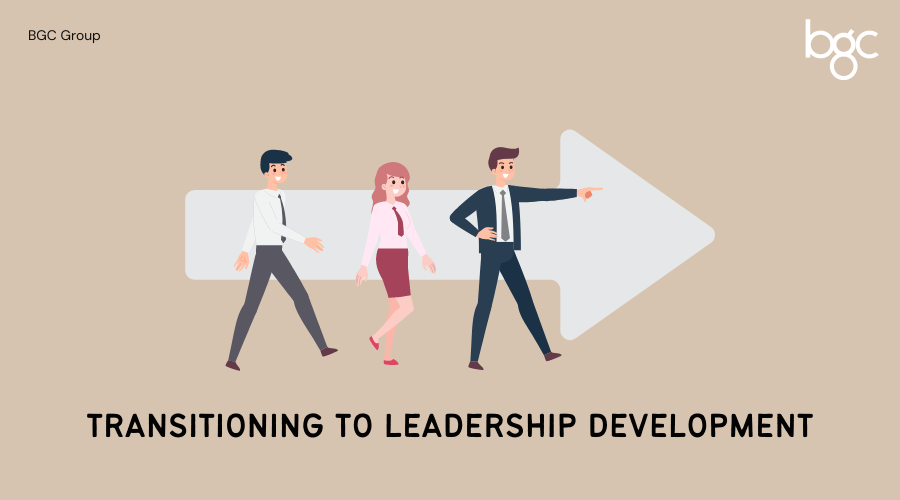The practice of leader development is a common and popular practice among many organizations. However, as a HR recruitment company in Singapore that is constantly improving our workforce, we would like to propose the difference between ‘leader’ development and ‘leadership’ development.
These two terms might not seem that different at first glance, but leader development is essentially more focused on developing a singular leader’s qualities to increase their effectiveness. This lacks a holistic and complete viewpoint as the main emphasis is usually on the individual.
On the other hand, leadership development refers to creating an environment that promotes the growth of leadership qualities within employees in the organization. In other words, it recognizes leadership as a social and interpersonal activity, establishing a culture of leadership centered around people.
Leader Development
Instead of leader development being its own separate practice, it can be considered as a component of leadership development. This is because both methods result in significantly different outcomes.
Since the focus of leader development is more individualistic, it is geared towards the accomplishment of personal goals. This is the motivational force that promotes growth in the leader as an individual.
The premise behind leader development is that developing people into leaders, produces successful leadership. According to this viewpoint, leader development focuses on helping people improve their intra-personal domain and abilities.
Organizations utilizing this form of development would also place more attention on the potential leader through guided reflection upon the completion of each project or assignment, usually through one-on-one meetings with individual data as part of the discussion.
Additionally, projects assigned to the potential leader would also be designed to assist their development in a way that benefits the organization and the individual. It attempts to engage said individual in formulating organizational goals as a part of their development.
As covered in one of our previous articles, this fosters an unspoken divergence between teams and their leaders. This typically reflects the type of leadership prevalent in Asian cultures as it causes employees to refrain from verbalizing opinions that might jeopardize how they are perceived by their superiors.
Leadership Development
On the contrary, the motivational force of leadership development is the accomplishment of group objectives. As the emphasis of this practice is on expanding team and organizational leadership abilities, successful implementation would result in growth as a group instead.
This provides more authority and freedom for employees to think for themselves which will boost their self-assurance and ability to discover the solutions they require. Instead of routinely seeking assistance and rather having faith in their own capabilities.
In a team setting, it builds trust and provides each member the power to make certain decisions, paving the way for developing accountability. As the decision is theirs, they will have a sense of responsibility and feel integral to the company.
An example of an organization that takes a unique approach to leadership development would be Spotify. Spotify categorizes its members into “tribes” that consist of multiple squads or teams. Within each team is a “chapter”, groups formed between squads that aid in the support of certain competencies.
While each group or chapter has a formal manager, their focus is mainly on mentoring. As chapters are part of a squad, chapter leaders also serve as squad members. This means that leadership within the squad is self- determined where members are able to switch squads while keeping their current leader.
Shifting the Focus to Leadership Development
In terms of resources, companies would usually send a group of leaders to brief leadership training sessions. This may seem productive but, as every team has a different dynamic, offers little to alter behavior at the workplace.
This form of training assumes that all participants require the same teachings to become a great leader. However, this is far from reality as all of the participants operate in a separate organization with a distinct setting and culture. In this case, improvements are unlikely to happen unless the trainings are particularly catered to each leader’s unique improvement areas.
This does not mean that companies are required to invest in customized training programs. It is instead more feasible to incorporate opportunities to develop leadership qualities within the workplace itself.
Furthermore, the involvement of team members in leadership development would provide team leaders with feedback, ideas for growth, and evaluating the progress of team members.
Rather than viewing leadership as a trait that can be taught just by attending one session, it should be a continuous learning process. Allowing team members to be a part of the process, introduces a ‘tracking system’ for team leaders.
That is not the only benefit, as observing the team leader’s efforts to improve has the potential to influence other members of the team as well. As a leader, setting this example would result in the whole team improving and eventually shifting from leader development to leadership development.
Alternately, if this method is not the most ideal for certain organizations, regular sessions that cover all members from different departments can also be considered. This might be preferable for smaller companies as they would be able to carry out the procedure all at once.
As for considerably larger companies, an all-inclusive session can also have a significant influence as it aids the company in delivering the culture of leadership development. This could also increase the speed of integration for the culture as all leaders and their teams would be growing at the same time.
In short, the success of an organization’s employees is significantly influenced by its leadership development. It visits leadership that involves other members from all organizational levels and functional sectors rather than isolating them. This strategy offers tremendous advantages to the individual, the teams they are a part of, and the organization as a whole.
This is essentially the key distinction between leader and leadership development as building social capital is the main emphasis of leadership development and aids in determining values, objectives, and connections between individuals.





